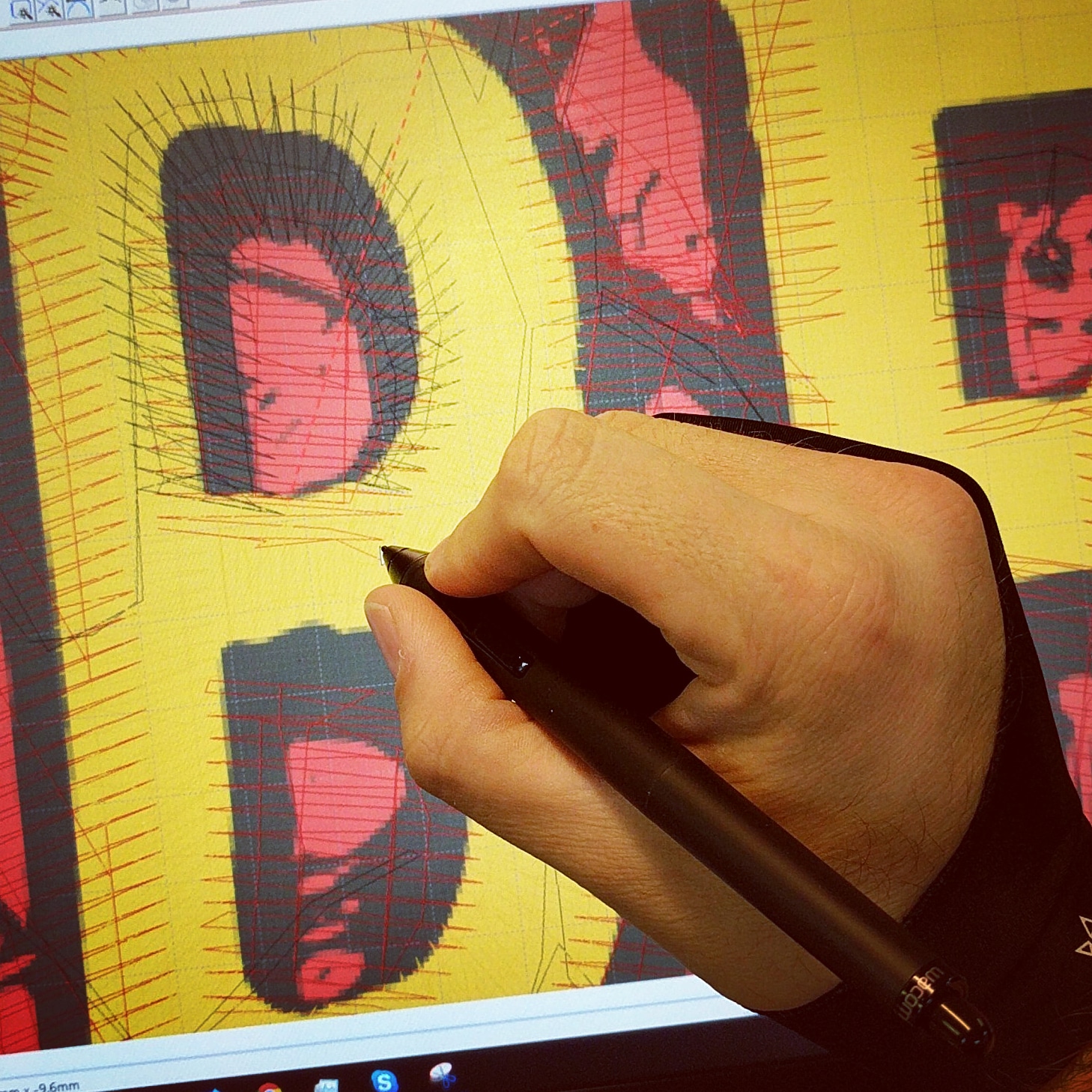Custom-made Digitizing for Embroidery: Customized to Your Needs
Wiki Article
Simplifying the Art of Embroidery Digitizing: Step-by-Step Guide
Needlework digitizing is a careful craft that requires accuracy and creative thinking. As technology remains to advancement, the digitization procedure has actually come to be extra accessible, allowing fanatics to bring their detailed designs to life effortlessly. In this guide, we will decipher the intricacies of embroidery digitizing, damaging down each step systematically to improve the procedure and encourage both novices and skilled embroiderers alike. Remain tuned to discover how you can streamline this intricate art kind and change your innovative visions into perfectly stitched masterpieces.Recognizing Needlework Digitizing Software Application
Embroidery digitizing software program offers as an essential device for changing detailed designs into digital layouts suitable with embroidery makers, promoting specific sewing and customization. This specific software application permits individuals to import numerous image data formats, such as JPG or PNG, and transform them into needlework machine-readable styles like DST, EXP, or PES - Digitizing for Embroidery. By utilizing functions like stitch modifying, rug alternatives, and string color choice, digitizing software allows users to regulate every element of the design procedureFurthermore, progressed needlework digitizing software application provides devices for developing complicated layouts, adjusting stitch thickness, and incorporating detailed information. Users can additionally preview the design prior to sewing it out, guaranteeing accuracy and decreasing mistakes. Additionally, many software programs give automatic features that help simplify the digitizing process, saving time and effort.
Understanding the capabilities of embroidery digitizing software application is necessary for achieving high-quality lead to needlework projects. By grasping this tool, embroidery enthusiasts and experts can unleash their imagination and bring detailed styles to life with precision and efficiency.

Picking the Right Layout File
After familiarizing yourself with the capacities of needlework digitizing software, the next crucial action in the process is choosing the appropriate layout declare your job. Digitizing for Embroidery. When choosing a design declare needlework digitizing, it's important to think about the complexity of the design, the dimension of the end product, and the kind of textile you will be dealing withFor intricate layouts with great information, a high-resolution picture or vector data is suggested to guarantee that the embroidery equipment can properly duplicate the layout. Furthermore, the dimension of the last item plays a significant role in selecting the best style documents. Bigger designs may need greater resolution documents to maintain clarity and sharpness.
In addition, the type of textile you will certainly be embroidering on affects the option of design data. Different textiles may need changes in the design documents to ensure that the stitches are appropriately straightened and the style appears as meant. By thoroughly picking the ideal design data based on these factors, you can establish yourself up for a successful needlework digitizing procedure.
Digitizing Tools and Strategies
Using specialized software and accuracy methods, digitizing tools are essential in transforming detailed styles right into embroidery-ready documents. Embroidery digitizing software application, such as Wilcom, Hatch, or Embrilliance, offers the required system to transform art work into stitch data. These programs use functions like stitch editing and enhancing, underlay alternatives, and lettering tools to make sure the layout equates perfectly onto textile.One of the key techniques in digitizing is producing a clear path for the needlework equipment to follow. This entails digitizing each element of the layout with precision, figuring out stitch kinds, densities, and directions. By utilizing tools like digitizing tablets or software-specific plugins, embroiderers can attain a high level of precision additional reading in their digitized styles.
Moreover, mastering the art of underlay stitching is important for generating high quality embroidery. Underlay sewing supports the material and creates a structure for the layout, making sure that the last product is both aesthetically attractive and durable. By understanding these digitizing tools and strategies, embroiderers can raise their craft and bring detailed styles to life with accuracy and effectiveness.
Customizing Stitch Kinds and Instructions
The option of stitch kinds can dramatically influence the total appearance and texture of the stitched design. By purposefully incorporating these stitch kinds, embroiderers can accomplish depth and measurement in their styles.In addition, the direction of stitches plays an essential role in boosting the visual charm of the final needlework. Diverse stitch directions can include structure, emphasize particular elements, and produce aesthetic interest. Changing the angle of stitches can imitate movement or all-natural patterns like fur or plumes. By explore various stitch angles and patterns, embroiderers can bring their layouts to life with remarkable information and helpful resources complexity. Mastering the art of customizing stitch kinds and directions empowers embroiderers to unleash their imagination and raise the high quality of their job.
Screening and Refining Your Digitized Layout
To make certain the accuracy and quality of your digitized layout, extensive testing and refinement are essential actions in the embroidery digitizing process. Once you have actually finished the digitization of your layout, it is important to test it prior to waging the actual embroidery. Examining enables you to determine any click now type of potential issues such as string breaks, sew density issues, or layout distortions that may influence the result.
After testing, it is essential to improve your digitized style based upon the responses from the test sew-out. This may involve tweaking stitch settings, readjusting densities, or making adjustments to the general style to achieve the preferred outcome. By iterating with testing and refinement, you can adjust your digitized design to perfection before moving on with the actual needlework process.
Conclusion
In conclusion, grasping the art of embroidery digitizing needs a thorough understanding of the software, picking the appropriate design documents, using digitizing tools and techniques, customizing stitch kinds and directions, and screening and refining the digitized layout. By following these steps, embroiderers can simplify the digitizing procedure and develop premium stitched layouts with accuracy and efficiency.Report this wiki page